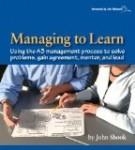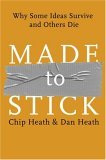The Lean Enterprise Institute is taking up a “Back to Basics” theme.
But what, exactly, are “the basics” of the Toyota Production System?
This is critically important. Permit me to cite an analogy.
Look at a house. What do you see? What would you say are “the basics?”
At first glance, all houses have walls, a roof. They have a door. They are divided into rooms for various activities and purposes. A “basic house” is going to have an entry, a living room, a kitchen, a couple of bedrooms, a bathroom. More complex houses will have more rooms, fancier architecture, higher grades of materials, be bigger, but the basics are all there.
OK, that is a basic house.
I make this point because when people talk about the basics of “lean manufacturing” they talk about the things you can see. If I open up Learning to See, and turn to the “Green Tab” the chapter’s title is “What Makes A Value Stream Lean.” That chapter is primarily (right after the talk about waste and overproduction) a list and description of “Characteristics of a Lean Value Stream.”
- Produce to your takt time.
- Develop continuous flow wherever possible.
- Use supermarkets to control production where continuous flow does not extend upstream.
- Try to send the customer schedule to only one production process.
- Distribute the production of different products over time at the pacemaker process (level the production mix).
- Create an “initial pull” by releasing and withdrawing small, consistent increments of work at the pacemaker process. (Level the production volume).
- Develop the ability to make “every part every day” (then every shirt, then every hour or pallet or pitch) in fabrication processes upstream of the pacemaker process.
Now I have to say right now that I have always loved this chapter. I cannot count the number of people I have referred to “The Green Tab” as a fundamental primer. It includes all of the basics, just like our house.
In their latest book, Kaizen Express, the LEI has brought out some more detail on these same points, and added a few “rooms” to the house. One critical aspect they add is various topics that add up to quality. (It’s kind of like leaving out the kitchen or the bathroom if you don’t mention that.) They talk about zone control, line stop, and countermeasures to quality problems. (I will do a full review on this book soon.)
Then on page 99 starts four pages on Employee Involvement where they talk about practical kaizen training (PKT), and suggestion programs.
Let’s go back to our house. The things we said were “the basics” were the things you see when you look at it from the street, and go inside and walk around in it. But in an industrialized country, the modern single family residence is a miracle of accumulated knowledge and technology. The basics are the things that keep it from sinking into the ground, from catching on fire, from leaking and rotting. They are the things you can’t see, but unless you understand them, your house may look like the one next door, but it won’t perform like the one next door.
I have been in dozens of factories that had takt time, some semblance of continuous flow, pull systems, supermarkets, all of that stuff. They had run hundreds, maybe thousands, of kaizen events, and had suggestion programs. All of these things were visible just by walking around.
Yet most of them were stuck. They had reached a point when all of their energy was being expended to re-implement the things that had slid back. Three steps forward, three steps back.
They had read Ohno’s book, they knew the history of the Toyota Production System. They understood all of the engineering aspects of the system, and could install very good working examples of all of it.
But something wasn’t there, and that something is the foundation that keeps the house from sinking into the ground. It is the real basics.
Kaizen Express hints at it on pages 99 – 102, it is true employee involvement. And here is a real basic: Employee involvement is created by leader involvement. Not just top leaders, all leaders, at all levels.
To be honest, a lot of technical specialists don’t like that very much for a couple of reasons. First, engaging the leaders, at all levels, is really hard. It is a lot easier to get things done by going straight to the gemba and doing it ourselves – we show people how to do it, we “engage” them in the initial implementation, and everything is wonderful for the Friday report-out.
But I contend that the foundation of the Toyota Production System is the leadership system. It is the system of leadership that holds up all of the walls that we call takt, flow and pull. Those things, in turn, enable the leadership system to function better. The “characteristics of a lean value stream” evolved in response to the leadership system, in order to strengthen it. It is a symbiosis, an ecosystem.
“But it didn’t start out as a leadership system.” No, it did not. The history of how the Toyota Production System evolved is well documented, and the leadership system was less designed than it evolved. But let’s go back to our house analogy.
Primitive houses only have the “basics” I described above. They don’t have sophisticated foundations, some are just built on skids (if that). But because they lack the basics, most of those primitive houses don’t last.
And there is the paradox. When we say “back to the basics” we cannot only refer to the chronological history of how the system developed. We have to take the most successful, most robust example in front of us today, and we have to look at what fundamental thing holds this thing up and lets it grow more robust every day.
So let’s take a look at what Toyota teaches when they teach someone the basics.
The article Learning to Lead at Toyota was written back in 2004, but I still feels it offers a lot of un-captured insight into the contrast between what Toyota thinks are “the basics” and what most others do. I want to encourage everyone to get a copy, and not just read it, but to parse it, study it, and use it as an “ideal condition” or a benchmark. Compare your “lean manufacturing” and your leadership systems to what is described in here. Ask yourself the question:
Do we really understand the basics?
Note: There are now links to my study guides for Learning to Lead at Toyota on the Resources page.
 Managing to Learn
Managing to Learn